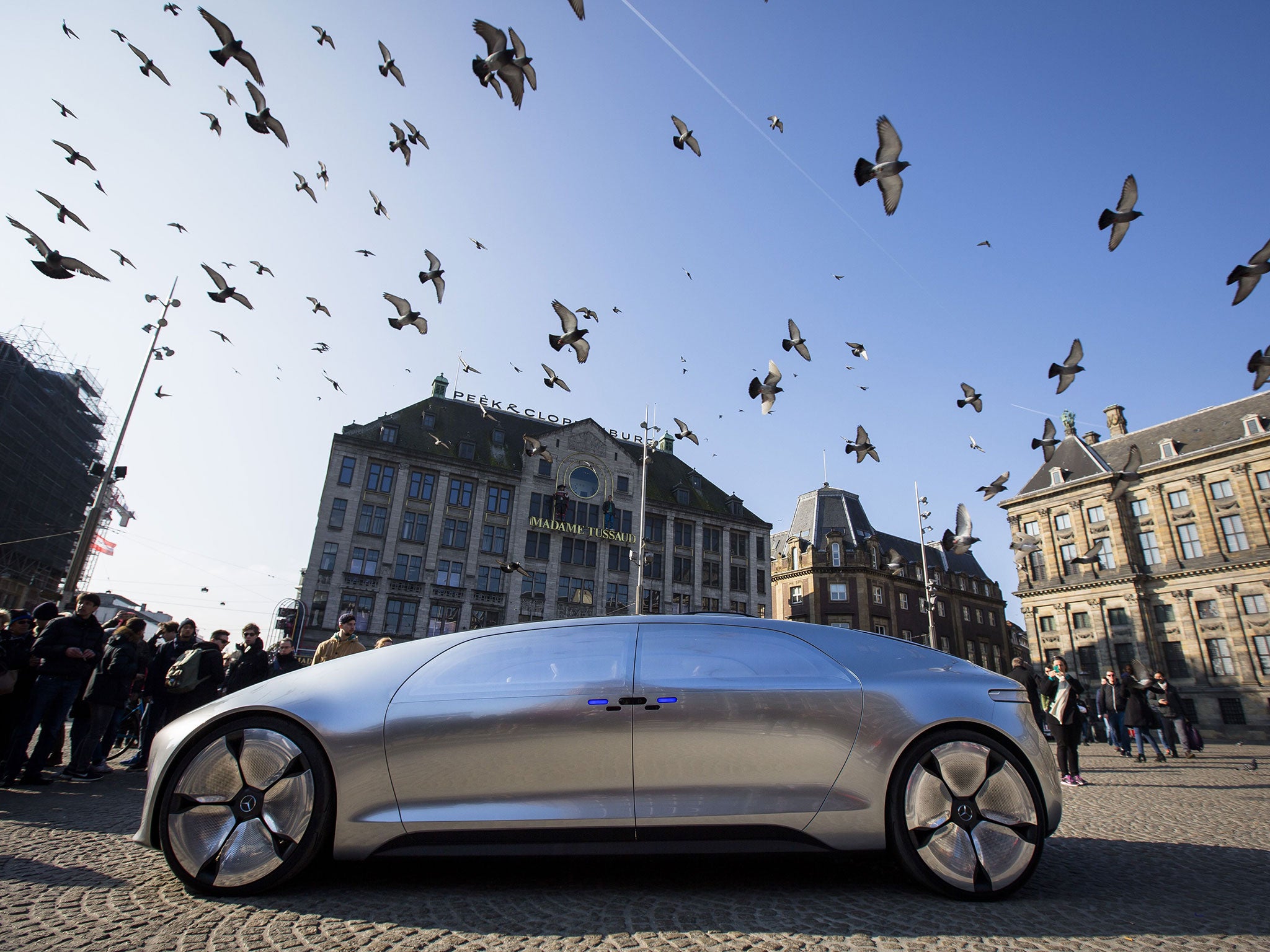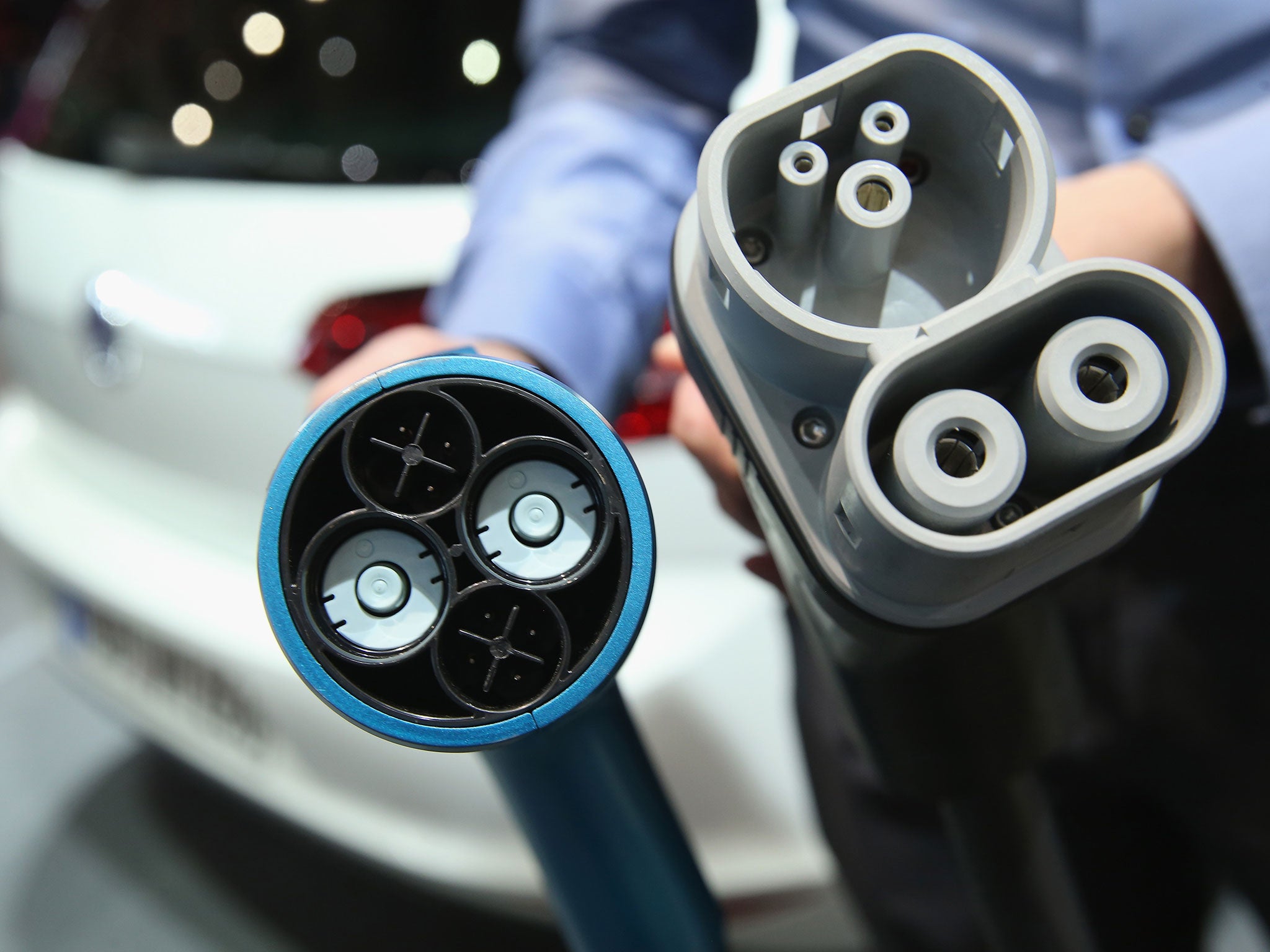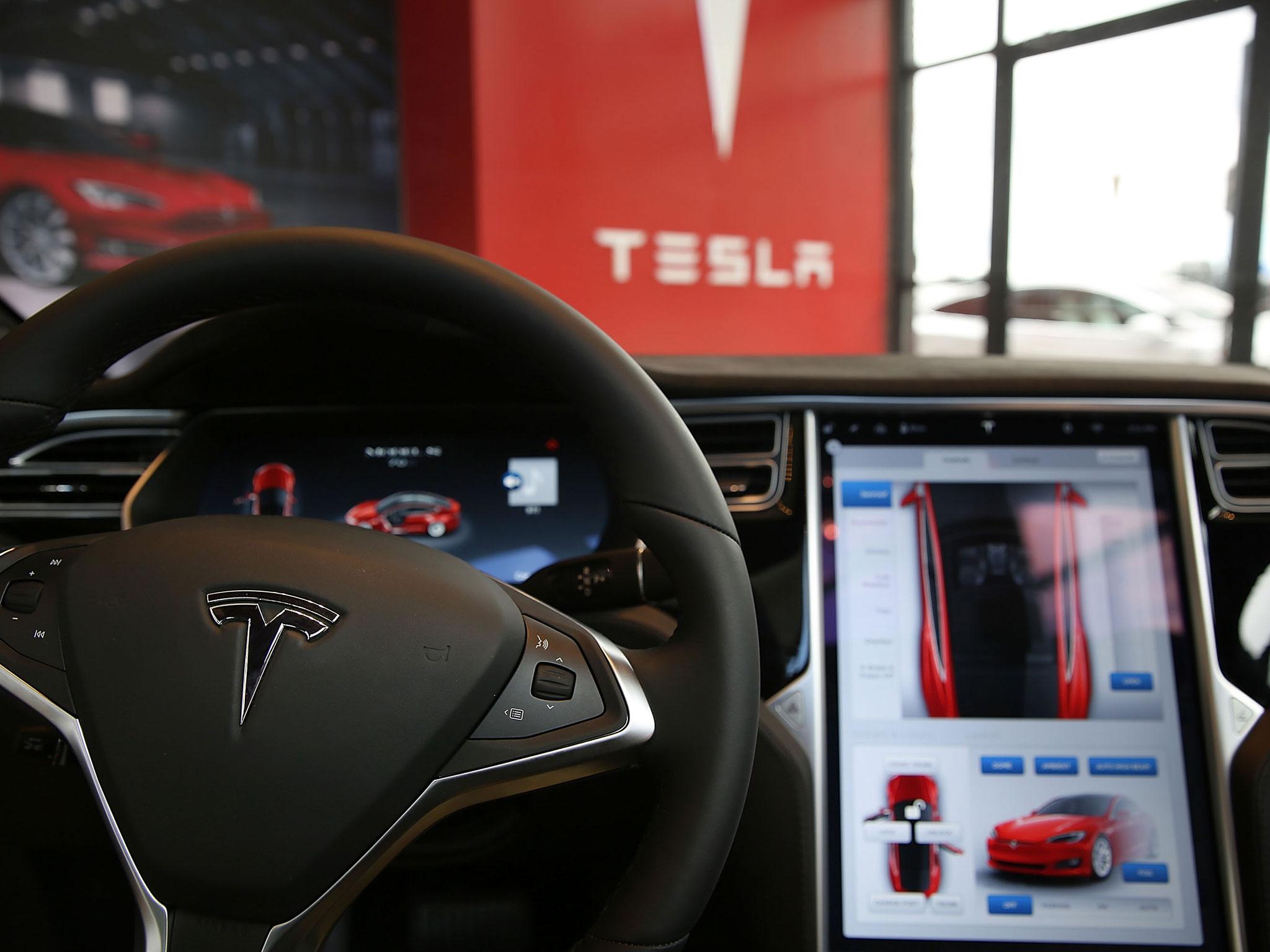The future of transport? Electric avenue
Uber and Tesla are just the outriders: our roads and vehicles are being coopted by the ‘internet of things’ – and the technology has its foot to the floor

This has not been a good year for electric vehicles. Last month a Tesla Model S electric car crashed while in Advanced Driver Assistance Mode – essentially the first step towards a self-driving car. On Valentine’s Day, a Google prototype self-driving electric vehicle was caught on camera colliding with a bus. And most recently it has been announced that electric car chargers at UK service stations will no longer be free to use, instead costing £5 per 20-minute charge.
These are all body blows to an industry still finding its feet. Yet despite all this, most indications point to EV’s and their attendant advances – driverless cars, smart roads, wireless charging, and car sharing services – as on a continuous and unstoppable rise. Jaguar Land Rover is to start testing self-driving technology in a fleet of more than 100 research vehicles on public roads, with vehicles to be driven on a new 41-mile test route on motorways and urban roads around Coventry and Solihull later this year. Driverless tractors are already working Britain’s fields. In fact, if current trends continue, a science-fiction style future of transportation could be upon us much quicker than you’d think.
Already electric vehicles are no longer the hopelessly uncool and underpowered hairdryers that petrol heads once scoffed at. Fuelled by rapid technological improvements, the EV market is taking off, with a 366 per cent rise in sales last year in the UK alone. Much of this is thanks to advances in battery technology which are overcoming consumer worries such as “range anxiety”. Tesla’s high-end performance EV, the Model S, has a range of more than 300 miles (and can reach 0 to 60 mph in a jaw-dropping 2.8 seconds) and Nissan’s affordable family EV, the Leaf, can now travel up to 155 miles on a single charge. This rise in range is matched by a fall in cost, with battery prices plummeting 40 per cent since 2010.
All of which leads some experts to believe that by 2050 only 10 per cent of new-build cars will be powered by petrol alone. “Transportation will become a lot more electrified,” says former Microsoft executive and futurist Ramez Naam. “Everything in society has been electrified over time and now it’s the turn of vehicles.”

Current lithium-ion batteries have made huge advances but the batteries of the future might go even further with so-called metal-air batteries offering potentially ten times the range of current devices. Exciting advances in materials technology could also play a part with the new “super material” graphene offering possibilities of longer range batteries that recharge within seconds rather than minutes. Add to this energy storing body panels – where the vehicle’s body itself acts as a source of power – and you have a bright future for battery technology. There is even the possibility of “smart” batteries that recharge themselves while in use. “There are a number of cells in each battery,” says author and futurist Jack Uldrich, “and you can in fact configure the battery to know which cells to drain energy from while you’re recharging another.”
Not that batteries are the only option. Wireless charging might eliminate the need to wait for battery technology to improve at all. Dynamic wireless charging could see EVs recharged by the road itself as they drive along. This system, driven by magnetic induction embedded in the road surface, is closer to realisation than you might think. It already powers buses in South Korea, and the UK Government is currently trialling the system for use on its motorways.
Charging isn’t the only wirelessly controlled aspect of EV evolution. Wireless software updates could see cars constantly updated with the latest downloads and apps, much like our smart devices are today. Tesla has already wirelessly updated its Model S and Model X vehicles with packages to assist the driver electronically, pioneering an interconnectivity that will soon see cars firmly part of the “internet of things”. “Every manmade object will eventually be online,” says Naam, “that’s very near-term. There’s no reason you can’t change important things like the behaviour of your car, the internal lighting or the entertainment – this will be your fixed work space, your entertainment space.”
Tesla’s 7.0 and 7.1 software updates included remote parking, auto-steer and auto-braking options, which make its EVs essentially self-driving in optimum conditions. The remote parking option alone is like something out of James Bond or Knight Rider, using a smartphone to park your vehicle or call it out from a tight space, meaning you no longer need the agility of a contortionist to avoid scratching the car next to you at the supermarket. The self-driving developments point the way to another not-so-distant breakthrough – the advent of true “driverless” cars. “Autonomous vehicles are already a real trend that could be here a lot sooner than most people expect,” says Uldrich. “Tesla are doing it. By next year Ford, BMW and Volvo are now all thinking about making their cars autonomous through software upgrades.”
The revolution in driverless cars is expected to be so sweeping that the head of Google’s self-driving car programme expects his 11-year-old son will never need a driving licence
The revolution in driverless cars is expected to be so sweeping that the head of Google’s self-driving car programme, Chris Urmson, expects his 11-year-old son will never need a driving licence. And Adam Jonas, leader of Morgan Stanley’s Global Auto Research Team, predicts that car companies will eventually see a 100 per cent shift in revenue from the sale of human-driven, individually owned cars to robot-driven, shared cars.
The driverless revolution could lead to seismic shifts in the amount of time at our disposal. The average American spends 100 hours a year sitting in traffic. Google estimates that six billion minutes are wasted across the US everyday just commuting to work. That’s six billion minutes that could be spent doing more productive things such as working, relaxing or just lying back and catching up on sleep. It could even extend our life expectancy by eliminating up to 95 per cent of all road traffic accidents caused by human error, saving more than a million lives a year globally.

Driverless cars are, in theory, indisputably safer. As futurist Glen Hiemstra told a conference: “What do you see when you drive your car into an intersection? You see what’s in front of you. You see a little bit out of your peripheral vision. But a driverless car sees in 360 degrees for about two blocks.” Even the space at our disposal will increase as car shapes alter to fit the new driverless template. “Automobiles will look different,” says Naam, “because instead of everything being clustered around the driving experience, they’ll be configured for work or social interactions.”
Doing away with drivers might be just one part of an even bigger revolution – the greatest shake up in transportation since the combustion engine, according to some commentators. “I think the biggest change will be how people view ownership,” says Uldrich. “The average automobile in the US is idle for 22 hours a day. It’s just a wasted resource, but in the future when cars can drive themselves and we have smartphones and other devices, we should be able to access a vehicle whenever we need one.”
The car sharing app, Uber, has already begun hiring the world’s top AI and robotics experts in order to become the world’s first driverless taxi service. And there’s a good chance that Google and Apple will move into the same market. Driverless car services would negate current challenges to EVs such as charging infrastructure and “range anxiety” as Naam explains: “If an Uber comes and gets you, you don’t really care how much range is left if it gets you to where you’re going. If it’s a self-driving vehicle it can literally pick you up, go some place, drop you off and then charge in the moments between calls.”
Such a future could render individual car ownership defunct and, according to one Google executive, lead to 60 per cent fewer cars on the roads. It could also radically alter how we use other forms of transport. As Uldrich points out, driverless EVs could significantly cut the number of short-haul flights. Instead passengers might choose to travel overnight in a driverless vehicle – something like a hotel room on wheels – instead of going through all the rigmarole of getting to and from airports.
And if all this isn’t green enough for you. EVs could make the world even greener – literally. Just think of all those car parks, garages and even roads we’ll no longer need. “It’s not just going to redefine the transportation industry,” says Uldrich, “it’s going to redefine our urban areas. In the future the number of garages and parking lots, the surface area that we will need to dedicate to vehicles, will plummet, which will open up our cities to more parks and more greenery. We will be able to begin redesigning our neighbourhoods, our cities and our physical infrastructure, so yes, it’s going to be big.”
Join our commenting forum
Join thought-provoking conversations, follow other Independent readers and see their replies
Comments
Bookmark popover
Removed from bookmarks